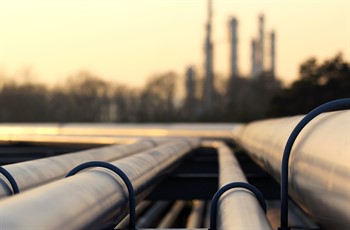How HSE informed on-shore pipeline risk assessment guidelines in Brazil

The Challenge
Petrobras, Brazil commissioned HSE to help inform the
development of on-shore pipeline risk assessment guidance for the
Sao Paulo region of Brazil. HSE carried out a survey of
international regulators and identified the details of guidance in
those countries which use QRA for pipelines. Interviews were also
held with experts from HSE, the Netherlands and UK industry
standards' working groups. In addition, HSE commented on draft
guidance from the Sao Paulo regulator, in light of worldwide
practices.
In Brazil, the application of pipeline risk tolerability
criteria had been carried out using different approaches by the
different local environmental agencies. There was therefore the
need for evaluating existing Brazilian risk criteria, as well as
understanding existing risk criteria from overseas.
Petrobras contracted HSE Science Division (then the UK Health
and Safety Laboratory) to carry out an independent review of
worldwide pipeline risk tolerability criteria and the associated
risk assessment methodologies for pipelines containing dangerous
fluids.
The Solution
Existing international methodologies were researched first. This
focused on existing methodologies and criteria for pipeline risk
assessment defined by: a) environmental licensing agencies and b)
pipeline codes. Information was obtained by a number of
methods:
- A literature search;
- Visits to the relevant government regulators in the UK and the
Netherlands to discuss and obtain information. These were chosen
because they have each been using risk assessment to make planning
decisions for a considerable time and have well-developed
methodologies;
- A questionnaire which was developed and sent to a number of
international government regulators; and
- Discussion with an expert on the UK pipeline codes PD 8010 Part
3 (2009) and IGEM/TD2 (2009).
Approaches using individual risk (IR) and/or societal risk (SR)
were of interest. The questionnaire was also used to inform the
discussions with the UK and Netherlands Government regulators. The
questionnaire was developed to start with more general questions
including the role of the regulator, whether applicable pipeline
design codes cover safety, and whether risk is used as a criterion
for granting permits for pipelines and/or for land-use planning
adjacent to a pipeline. More detailed questions were then asked.
These included asking about the risk criteria used, but also
included detailed questions about the assumptions in the
accompanying risk assessment methodology. It is HSE's experience
that consistent assumptions need to be made in the risk assessment,
so that the risk criteria lead to consistent decisions about
different pipelines. Issues about the risk assessment methodology
(to which it was known that the results of a pipeline risk
assessment can be very sensitive) included:
- Pipeline rupture scenarios modelled as pools and jets;
- Jet direction (for natural gas and LPG pipelines);
- Methodologies used for explosion consequence modelling;
- Hole sizes modelled for releases;
- Crater size and shape (for natural gas pipelines);
- Harm criteria including Probits;
- Failure rates;
- Ignition probabilities;
- Interaction length assumed for societal risk calculations;
and
- Intermediary stations along pipelines.
The Outcome
The HSE work informed the revision of the Sao Paulo guidelines
and was expected to be adopted federally throughout Brazil. A paper
was published jointly with Petrobras on the results of the
international survey: Mendes RF, Chaplin Z, Macbeth R, Wilday AJ,
Wardman MJ (2011). Pipeline risk criteria and methodology. Rio
Pipeline Conference, September 20-22, 2011.
For more information on our international work visit www.hsl.gov.uk/hse-international-leader-in-health-and-safety.
To get in touch with us email us directly at Business.Enquiries@hse.gov.uk.
Back to the top